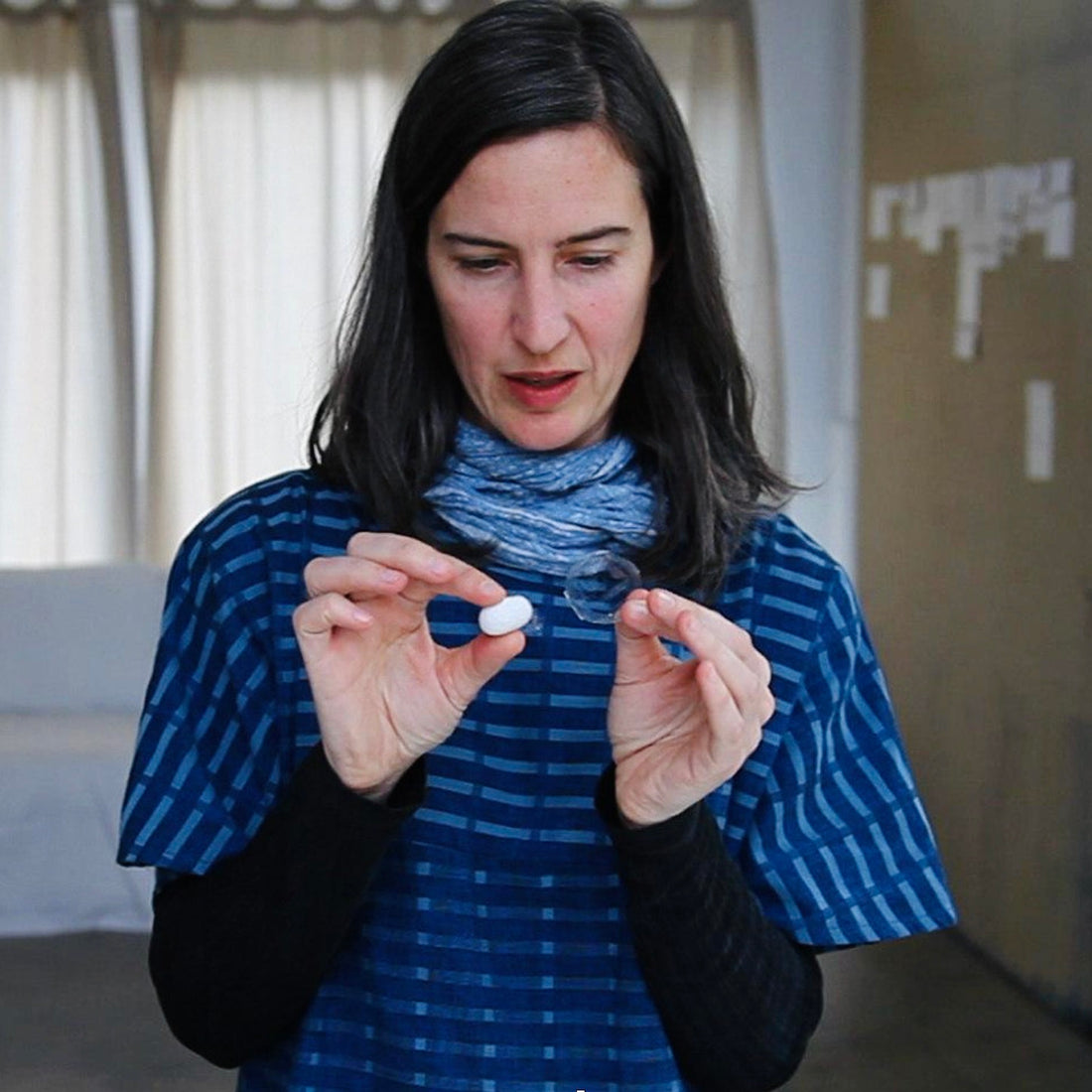
Im/materiality: On Silk Poems by Jen Bervin
Jen Bervin is an artist and writer working in the borderlines between text and textiles. Her book Silk Poems (2017) is part of a seven year project exploring the traditional uses of silk alongside its biocompatible qualities, and the microscopic (im)materiality of bio-engineered silk proteins.
Silk fibre is produced by silkworms, grown on mulberry leaves. After they have spun into a cocoon, raw fibres are harvested by, controversially, boiling the cocoons, and the silkworms. There is a rich five-thousand year history to the material, and, being biocompatible, it is fundamentally entwined with our bodies too. As Bervin says, “silk can appear anywhere in the body and the body will accept it,” and as she explains further in her Research Sampler: “Silk, as a material, is compatible with body tissues; our immune system accepts it on surfaces as sensitive as the human brain.”
Scientists have now used liquified clear silk inside the body to monitor blood chemistry, onto which Bervin modelled a poem — published in Silk Poems — written from the perspective of a silkworm, to be inscribed on the silk biosensor at DNA level.

Silk certainly seems to have qualities of the immaterial: there’s something spiritual in its microscopic, peaceful connections to the human body. But these connections to the body also give it an undeniable materiality, something tactile and earthly. And the book itself certainly reflects this dichotomy, being exquisitely tactile as an object, invoking touch. Delicate, with a soft cover and light bible paper pages. Letters are capitalised, and crowded together on loose white pages. The line breaks are often. The form of the poem on the page affects the timbre and grain of the voice, abstracting it somehow into immaterial language, about immaterial materials.

However, what at first seem to be abstractions are based on textile patterns and bioengineering:
“At the DNA level, silk self–structures in the form of a beta sheet, like a weft thread. And then […] I realised that the silkworm writes in exactly the same way, that back and forth snaking motion. There’s a written form called the boustrophedon, which is a right to left, left to right form. […] The boustrophedon became the model for the poem. I knew that the sensor would look like a cocoon, and it would look like a silkworm [had] inscribed a cocoon, but within that inscription will be letters.”
Bervin weaves together concept and material, attending to the silkworm’s subtle processes and valuable histories. We move with the silkworms through her work, from the macro to the microscopic, indulging in our human desire to imagine what it might be like to be another creature (and perhaps realising that we weren’t so far apart in the first place). With this close attention, her work demonstrates how the hierarchies between any ‘them’ and ‘us’ may begin to be dissolved — how an immaterial could become material, and how the things we believe to be material might not be so solid.
Written by Sally Button
Bervin, Jen, Silk Poems (New York: Nightboat Books, 2017)
Creative Capital, Jen Bervin Mixes Poetry With Cutting-Edge Silk Technology, 2022
